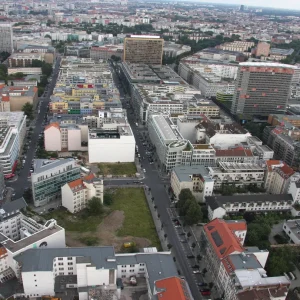
In an increasingly interconnected world, urban centres are evolving into digital ecosystems. Cities now rely on complex networks of information and communication technologies to manage infrastructure, transportation, utilities, and services. However, this digital transformation comes with its own set of challenges, most notably the burgeoning threat of cyber insecurity. This article delves into how cyber threats impact urban policy, planning, and transportation, exploring the vulnerabilities, risks, and strategies to enhance resilience and security in our cities.
Cyber Insecurity: A Growing Threat
Cyber insecurity refers to the vulnerability of digital systems to cyber-attacks, which can range from data breaches and ransomware to sophisticated attacks on critical infrastructure. The rapid pace of urban digitalisation has outstripped many cities’ abilities to safeguard these systems, making them attractive targets for cybercriminals.
The Digitalisation of Urban Infrastructure
Cities are increasingly dependent on digital infrastructure for efficient functioning. Smart grids, intelligent transportation systems, and connected public services represent the backbone of modern urban life. While these innovations offer significant benefits, they also expose cities to cyber risks.
Impact on Urban Policy
1. Regulatory Frameworks and Cybersecurity Policies
Urban policymakers must develop robust regulatory frameworks to address the complexities of cyber security. This includes creating policies that mandate regular security assessments, the implementation of encryption protocols, and adherence to international standards. Cities need to foster collaboration between government agencies, private companies, and cybersecurity experts to develop comprehensive strategies that anticipate and mitigate cyber threats.
2. Public-Private Partnerships
Effective cyber security in urban environments often requires collaboration between the public and private sectors. Public-private partnerships can facilitate the sharing of critical information, resources, and expertise. For instance, cities can collaborate with tech companies to develop secure infrastructure and respond swiftly to cyber incidents.
3. Investment in Cybersecurity Infrastructure
Governments must allocate sufficient funding for cybersecurity initiatives. Investing in advanced cybersecurity infrastructure, such as intrusion detection systems, firewalls, and encrypted communication channels, is essential. Furthermore, continuous investment in cybersecurity training for city employees and public awareness campaigns can help build a culture of security.
Impact on Urban Planning
1. Resilient Urban Design
Urban planners must integrate cybersecurity considerations into the design of city infrastructure. This involves creating redundant systems that can continue to operate in the event of a cyber-attack. For example, ensuring that traffic signals, public transportation systems, and emergency services have fail-safe mechanisms can minimise disruption.
2. Smart City Initiatives
Smart city initiatives aim to leverage technology to enhance urban living. However, these projects must prioritise cybersecurity from the outset. Integrating cybersecurity into the planning and execution of smart city projects can prevent vulnerabilities. This includes securing IoT devices, implementing robust data protection measures, and ensuring that all digital components are regularly updated.
3. Risk Assessment and Management
Urban planners need to conduct thorough risk assessments to identify potential cyber threats to city infrastructure. This involves analysing the vulnerability of critical systems and developing contingency plans. Risk management strategies should include regular testing of cyber defences and updating risk mitigation protocols.
Impact on Transportation
1. Securing Intelligent Transportation Systems
Modern transportation systems rely heavily on digital technologies. Intelligent Transportation Systems (ITS) use sensors, cameras, and communication networks to manage traffic flow, public transit, and emergency response. Securing these systems against cyber threats is crucial to prevent disruptions that could lead to accidents or congestion.
2. Vulnerabilities in Public Transportation
Public transportation networks, including buses, trains, and subways, are increasingly interconnected. Cyber-attacks on these systems can lead to service interruptions, safety hazards, and financial losses. Implementing strong cybersecurity measures, such as encrypted communication and regular security audits, can mitigate these risks.
3. Autonomous Vehicles
The advent of autonomous vehicles introduces new cybersecurity challenges. Hackers could potentially take control of self-driving cars, posing significant risks to public safety. Ensuring the security of autonomous vehicle networks through robust encryption, secure communication protocols, and continuous monitoring is essential.
Case Studies: Cybersecurity Incidents in Urban Settings
1. Atlanta’s Ransomware Attack
In March 2018, the city of Atlanta experienced a major ransomware attack that affected numerous municipal services. The attackers encrypted data and demanded a ransom in bitcoin. This incident disrupted city operations, including court proceedings, utility payments, and public records access. The attack highlighted the need for cities to invest in cybersecurity and have comprehensive incident response plans in place.
2. San Francisco’s Muni System Hack
In 2016, San Francisco’s Municipal Transportation Agency (Muni) was hit by a ransomware attack that disrupted ticketing systems and provided free rides to passengers. The attack exposed vulnerabilities in the agency’s IT infrastructure and underscored the importance of securing public transportation systems against cyber threats.
Strategies for Enhancing Cybersecurity in Urban Environments
1. Developing Cyber Resilience
Building cyber resilience involves creating systems that can withstand and recover from cyber incidents. This includes regular updates and patches to software, continuous monitoring for unusual activity, and having robust backup systems. Cities should develop incident response teams that can quickly address breaches and minimise damage.
2. Implementing Comprehensive Training Programmes
Educating city employees about cybersecurity best practices is crucial. Regular training programmes can help employees recognise phishing attempts, use strong passwords, and follow secure communication protocols. Public awareness campaigns can also educate citizens about the importance of cybersecurity.
3. Encouraging Innovation and Research
Cities should support research and development in cybersecurity. Collaborating with universities, research institutions, and tech companies can lead to innovative solutions to emerging threats. Investing in cybersecurity research can help cities stay ahead of cybercriminals.
4. International Collaboration
Cyber threats are not confined by national borders. International collaboration is essential for addressing global cyber threats. Cities should participate in international cybersecurity initiatives and share information with other municipalities and countries to improve collective security.
Future Directions and Emerging Trends
1. Artificial Intelligence and Machine Learning
Artificial Intelligence (AI) and Machine Learning (ML) can enhance cybersecurity by identifying and responding to threats in real-time. These technologies can analyse vast amounts of data to detect patterns and anomalies that may indicate a cyber-attack. Integrating AI and ML into urban cybersecurity strategies can improve threat detection and response times.
2. Blockchain Technology
Blockchain technology offers promising solutions for securing urban infrastructure. Its decentralised nature and encryption capabilities can protect data integrity and prevent unauthorised access. Cities can explore the use of blockchain for securing transactions, identity management, and data sharing.
3. Quantum Computing
Quantum computing has the potential to revolutionise cybersecurity. While it poses challenges, such as the ability to break current encryption methods, it also offers new possibilities for creating virtually unbreakable encryption. Urban policymakers and planners should keep abreast of developments in quantum computing and its implications for cybersecurity.
Conclusion
The rise of cyber insecurity poses significant challenges to urban policy, planning, and transportation. As cities continue to digitalise, the threat landscape evolves, requiring proactive measures to safeguard critical infrastructure. By developing robust regulatory frameworks, investing in cybersecurity infrastructure, and fostering collaboration between public and private sectors, cities can enhance their resilience to cyber threats. Integrating cybersecurity into urban planning and transportation systems is essential to ensuring the safety and efficiency of modern urban environments. As technology continues to advance, cities must remain vigilant and adaptable, leveraging innovations such as AI, blockchain, and quantum computing to stay ahead of cybercriminals and protect the digital backbone of urban life.






